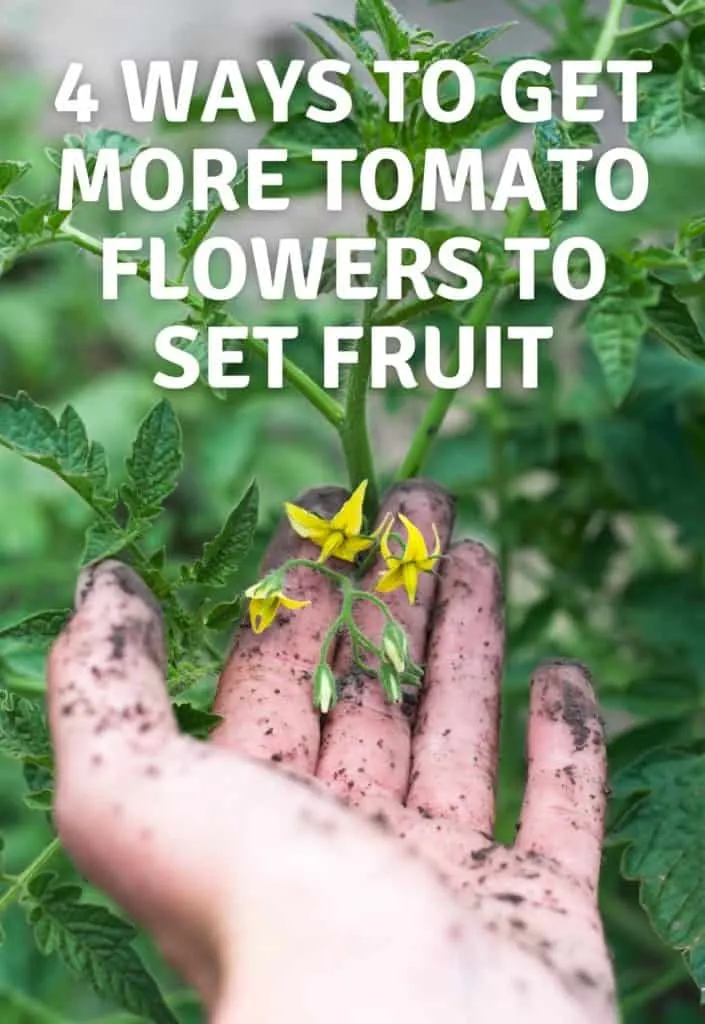
Peeking out of the leaves of your bushy tomato plant, you notice a tiny yellow flower. The excitement sets in. So you wait for your first fruit. And keep waiting.
But those tiny yellow blossoms never seem to give you the fruit you’re after. As disheartening as it may be, you are not alone.
More often than not, it’s environmental factors causing these headaches. While we can’t control the weather, there are a few ways to encourage fruit set and turn those pretty little flowers into delicious sweet tomatoes.
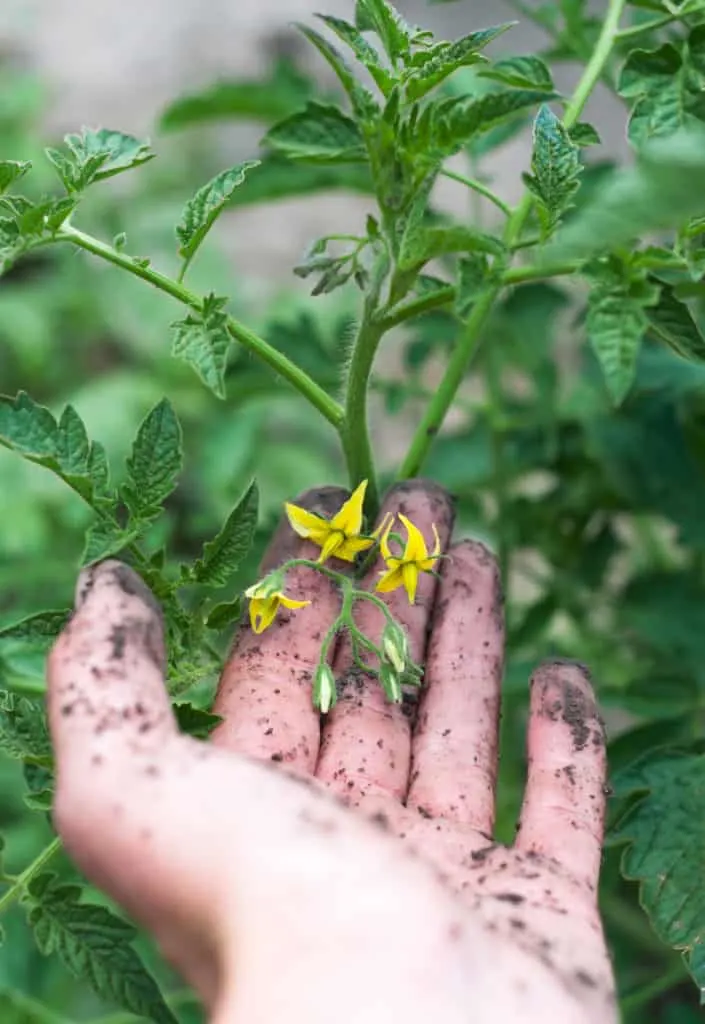
3 Reasons Your Tomato Flowers Aren’t Fruiting
1. Temperature
Excessive, prolonged heat with temperatures higher than 80F causes stress in tomato plants. While they may enjoy the warmth, too much heat can cause a range of issues – including problems with flowering.
Extended periods of stress send the plant into self-preservation mode. The production of flowers and fruit requires lots of energy and water, even more in high temperatures. Therefore, the plant stops the flowering and fruiting processes in an attempt to stay alive and reduce water and energy requirements.

On the other end of the spectrum, cold snaps will also cause stress and a reduction in fruit. Tomatoes cannot handle the cold – even minor periods can cause serious damage. Without the right conditions to set fruit (warm temperatures above 65F), your plant may stall development in the flowering stage.
2. Insufficient Pollination
High temperature ranges or humidity throughout the day and night can negatively affect pollen and the pollination process.
High humidity causes the pollen to become sticky, preventing it from falling off the flower. In dry hot regions, the pollen dries out and fails to stick to the female parts of the plant and even on pollinator’s bodies.
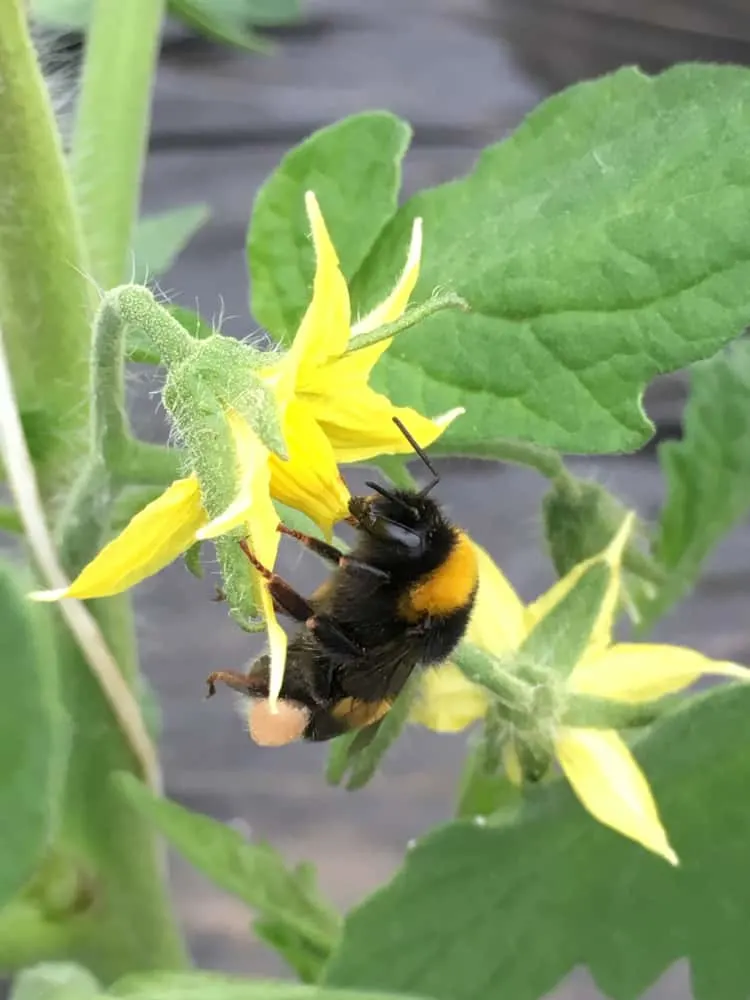
These issues can impact the tomatoes’ self-pollination, preventing fruiting.
Insufficient airflow around the plants to facilitate self-pollination is another culprit. Ultimately, pollination must occur before your plants set fruit, so it’s a vital characteristic to pay attention to.
3. Nutritional Factors
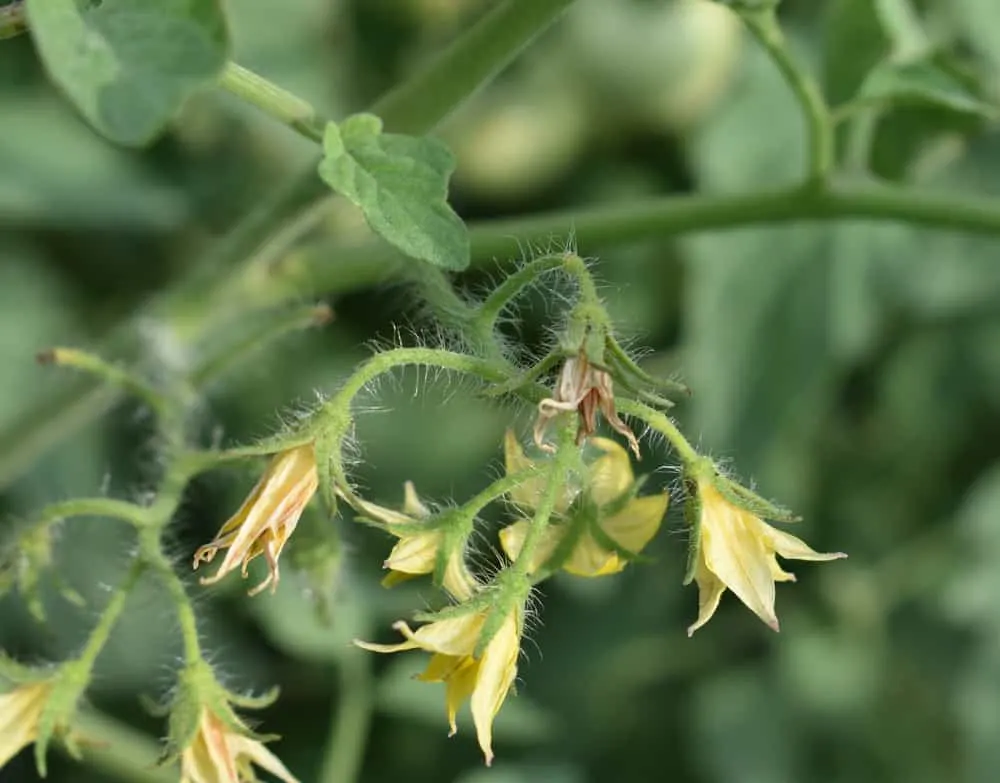
Tomato plants require rich, fertile soil to produce plump, healthy tomatoes. However, when you’re looking to produce fruit, nitrogen is not the nutrient you’re after. Nitrogen facilitates foliage growth, not flowers and fruit. If your flowers are not fruiting, excess nitrogen in the soil may be the cause.
Too little water could be another issue. Nutrients are only taken up when there is sufficient water in the soil. A lack of water results in poor fruit development, or none at all, and can contribute to blossom drop.
Another potential factor is that there are simply too many flowers and leaves for fruit to set. The extra foliage causes competition for nutrients within the plant. This may cause blossom drop, reducing the fruit yield.
4 Ways To Encourage Tomato Flowers To Fruit
1. Increase Pollination
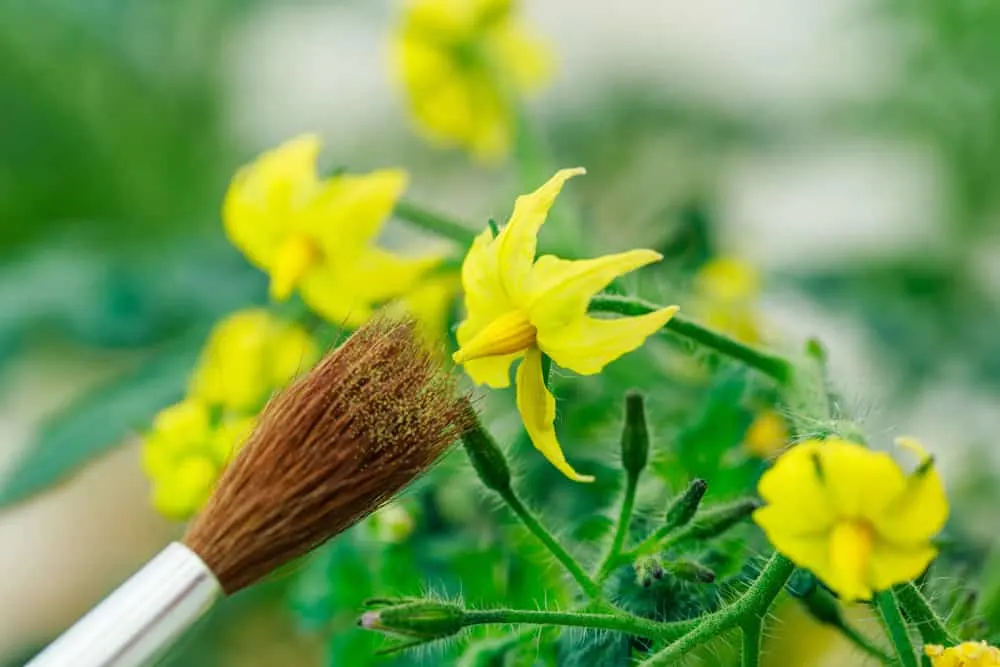
Hand pollinating is an easy, efficient way to ensure you get as much fruit from your plants as possible.
Even when temperatures are ideal, pollination by hand is extremely useful and can give the plants that extra push they need.
The easiest way to facilitate pollination is to carefully shake or tap on the plant slightly to make the pollen fall off the flowers.
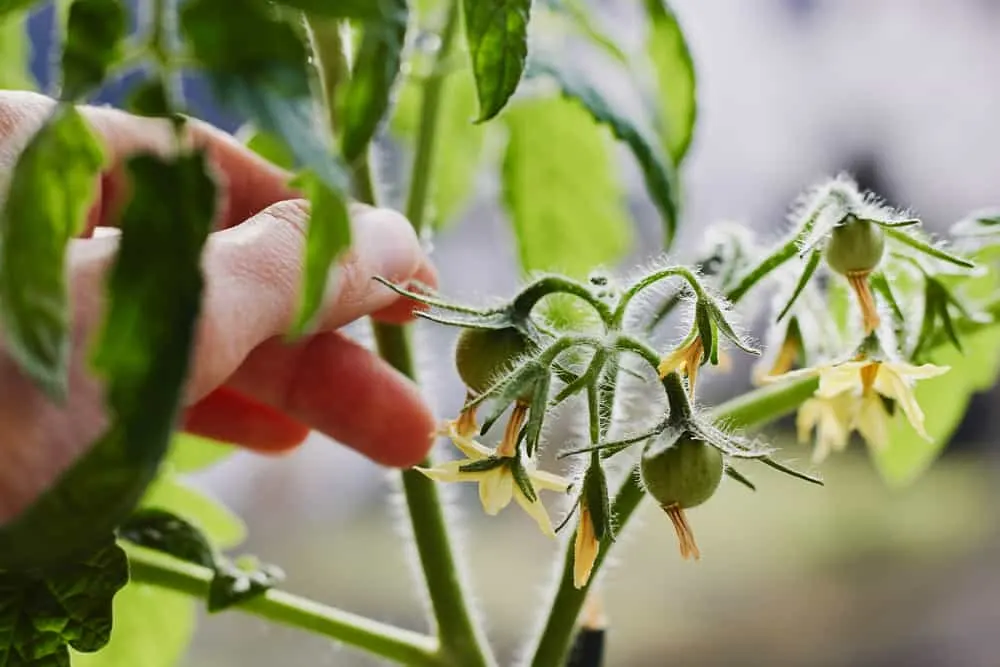
To try another technique, use a small paintbrush, transferring the pollen from flower to flower as pollinators do. Hygiene should be top of mind when using this method. Cross-pollination can be avoided by using different brushes for different plants and tomato varieties.
Encouraging pollinating insects is also a must in any home garden. Bees and other beneficial insects are attracted to bright flowers and require easy access to your tomato plants.
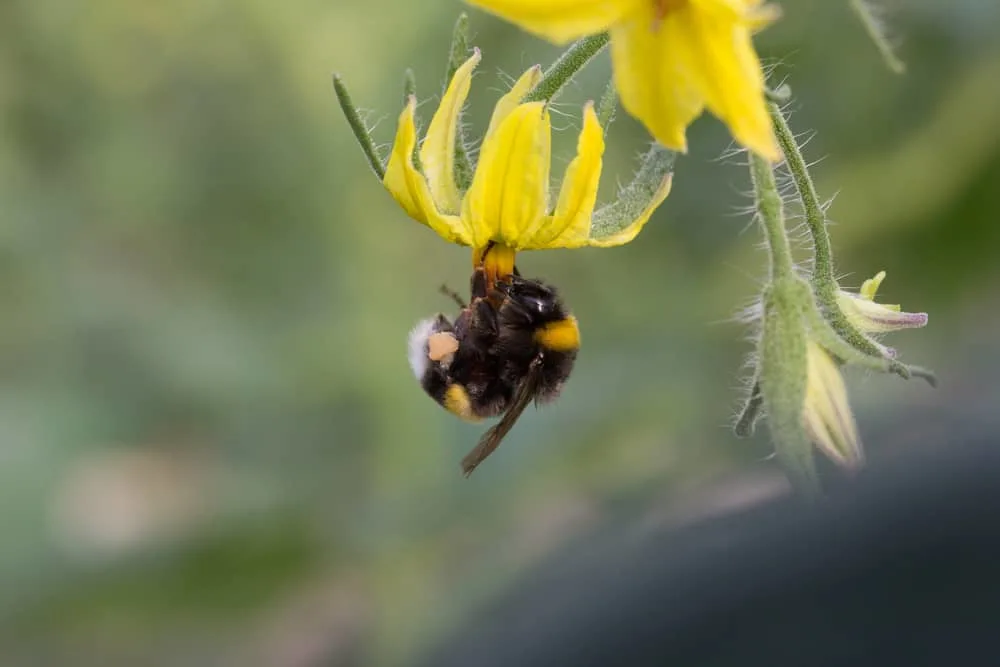
The correct spacing of tomato plants is imperative; this facilitates airflow which will aid in the pollinating process. The right spacing will also allow for easy access to the plants for you and the necessary insects.
Most pesticides harm bees and other pollinators. Instead of using pesticides, try to encourage other beneficial insects into your garden, like wasps and ladybugs, to tackle your pest problems for you.
Related Reading: How To Hand Pollinate Tomato Flowers & Increase Fruit Production
2. Protect From Excessive Temperatures

The best way to protect tomato plants from heat is to plant them strategically. Plant tomatoes where ‘natural’ shade forms, near east-facing walls for example.
You can also create shade by building row covers. Pick the correct shade cloth for your row covers and ensure there is an opening facing east. The tomatoes receive the full morning sun while being protected as much as possible during the warmest parts of the day. Row covers have the benefit of protecting tomato plants from colder temperatures too.
3. Water Correctly
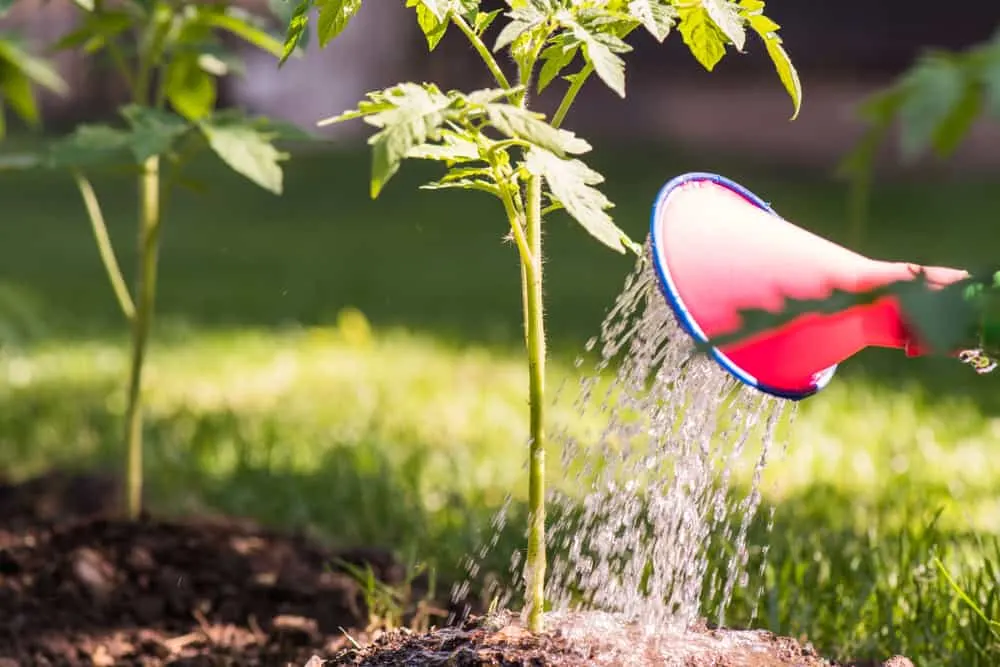
As mentioned previously, incorrect watering can cause nutritional problems that prevent fruiting. But it can also cause severe plant stress, focusing the attention of the plant on staying alive rather than producing fruits.
Always water the soil directly, using a thick layer of mulch as a barrier to stop soil splashing onto the leaves.
Water slowly and deeply to encourage root growth downwards and to fully saturate all parts of the soil.
Never water overhead to prevent water from touching the leaves, and water consistently to prevent water stress.
Here’s our guide to correctly watering tomato plants.
4. Fertilize At The Right Time
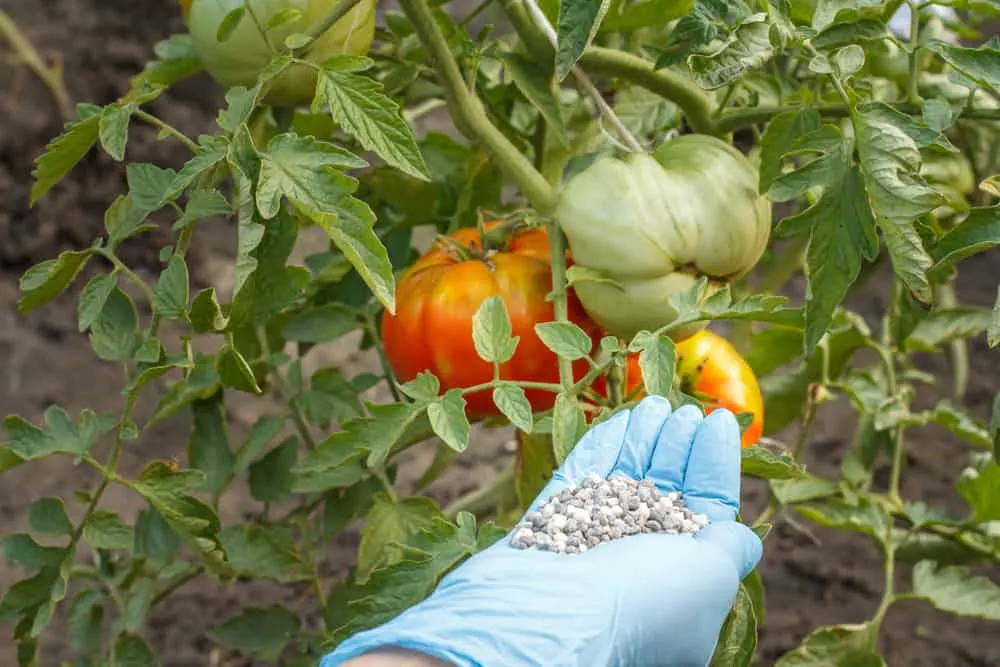
Tomatoes should be fertilized twice over the growing season – once soon after planting to promote growth, and once just after flowering to promote fruiting.
Missing the latter fertilizing window, or using the wrong fertilizer at this time, contributes to fruiting issues that may reduce overall yield if not tacked soon.
Apply a balanced NPK fertilizer (10-10-10) when planting, and switch to phosphorus and potassium-focused fertilizer (5-10-10) as the first flowers emerge. This will help the plant produce more flowers and direct its energy into turning those flowers into fruits.
These tips will help reduce the stress of your tomato plant and encouraging fruiting.
As a bonus, a lot of these tips aid in fighting against diseases and pests, and generally make your plants healthier – all positives that result in bigger, better yields.
